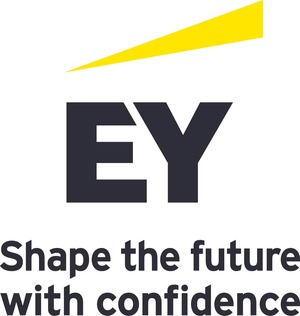HOUSTON, Sept. 4, 2013 /PRNewswire/ -- As North American crude oil production increases, rail offers efficiency in logistics and an effective alternative in an environment challenged by pipeline constraints. EY's report released today, Rolling with the revolution: rail's role in the new oil and gas era, addresses how the crude-by-rail (CBR) business model continues to increase as a strategic source of feedstock diversification while offering producers the ability to capitalize on regional pricing disparities and providing added flexibility for refiners.
(Logo: http://photos.prnewswire.com/prnh/20130701/NY40565LOGO-b )
The strong growth in production from the Canadian oil sands, combined with the surge in US unconventional oil production as a result of the advances in drilling and completion technologies, has significantly stressed the North American oil transportation infrastructure and caused unprecedented quality dislocations and price disparities for the benchmark crudes.
The resulting supply/demand imbalances and logistical bottlenecks point to a need for better long-term pipeline solutions and a more efficient pipeline network. In the meantime, these imbalances have created opportunities for both oil producers and refiners to take advantage of these imbalances and bottlenecks by using rail transportation. And as a result, the industry is witnessing a fundamental change in crude logistics.
"CBR is more than just a short-term solution and/or opportunity. While it is not going to be a complete replacement for pipelines, it is positioned to grow and will remain a long-term strategic complement or supplement to pipelines," comments Dale Nijoka, EY's Global Oil & Gas Sector leader.
Rail transportation is moving from niche volumes to base-load for a number of refiners, allowing them access to previously inaccessible crudes or in some cases to capture price differentials as pipeline capacity additions lag production gains in many regions. Rail has also allowed producers to link inland prices to a broader set of benchmarks than just West Texas Intermediate (WTI), at a time when pricing is very dynamic. Additionally, given the optionality on destinations that rail has created, producers are, in many cases, reluctant to commit volumes to new pipelines.
Although pipelines generally are the least expensive crude transport option, the benefits of rail – speed to market, extensive geographic coverage, faster transit times, fewer permitting/regulatory hurdles – imply that that the industry will continue to utilize both modes. Landlocked or logistically-constrained crude will generally trade at a discount to other comparable crudes, creating opportunities and incentives for both upstream producers and downstream refiners.
Nijoka adds, "Where pipelines are not an option, oil and gas companies that have a crude-by-rail strategy with an integrated operational plan that includes tracking and analysis, along with a clear inbound and outbound logistical scheme, will be most successful in getting their crude to market or their feedstock sourced in the most cost-effective manner."
CBR presents a relatively efficient solution for producers to transport crudes to markets with higher potential netbacks, or for refiners to have access to cheaper, advantaged crude. In both cases, CBR provides enormous flexibility and the ability to respond to rapidly changing and unforeseeable market conditions; this is a tremendous asset that should ensure the industry's long-term sustainability in the unconventional revolution.
About EY
EY is a global leader in assurance, tax, transaction and advisory services. The insights and quality services we deliver help build trust and confidence in the capital markets and in economies the world over. We develop outstanding leaders who team to deliver on our promises to all of our stakeholders. In so doing, we play a critical role in building a better working world for our people, for our clients and for our communities.
EY refers to the global organization and may refer to one or more of the member firms of Ernst & Young Global Limited, each of which is a separate legal entity. Ernst & Young Global Limited, a UK company limited by guarantee, does not provide services to clients. For more information about our organization, please visit ey.com.
This release has been issued by Ernst & Young LLP, an EY member firm serving clients in the US.
How EY's Global Oil & Gas Center can help your business
The oil and gas sector is constantly changing. Increasingly uncertain energy policies, geopolitical complexities, cost management and climate change all present significant challenges. EY's Global Oil & Gas Center supports a global network of more than 9,600 oil and gas professionals with extensive experience in providing assurance, tax, transaction and advisory services across the upstream, midstream, downstream and oilfield service sub-sectors.
The Center works to anticipate market trends, execute the mobility of our global resources and articulate points of view on relevant key sector issues. With our deep sector focus, we can help your organization drive down costs and compete more effectively. For more information, please visit www.ey.com/oilandgas.
Contact:
Leslie Huselton,
469 375 0247
[email protected]
SOURCE EY
WANT YOUR COMPANY'S NEWS FEATURED ON PRNEWSWIRE.COM?
Newsrooms &
Influencers
Digital Media
Outlets
Journalists
Opted In






Share this article